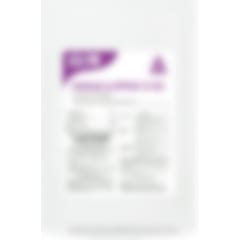
Talpirid Mole Bait - 1 Box (20 Worms)
Talpirid Mole Bait as a mole bait has repeatily proven effective in killing moles quickly and long term.Talpirid Mole Bait is our number one seller for mole control and can't be matched as a mole bait. Talpirid Mole Bait has also proven itself through various field tests. Researchers have put the bait performance to test throughout the United States, examining its effectiveness on various moles species, different soil types and baiting conditions.
Talpirid Mole Bait works quickly and can kill moles in 24 hours.

Product Information
Talpirid Mole Bait
Talpirid Mole Bait has repeatedly proven effective in killing moles quickly and long term. Talpirid Mole Bait is our number one seller for mole control and is not matched as a mole bait. Talpirid Mole Bait has proven effective through various field tests. Researchers put Talpirid's bait performance to the test throughout the United States, examining its effectiveness on various moles species, different soil types and baiting conditions and it has been top rated.
Why Talpirid Mole Bait Is Top Rated - It Mimics Earthworms
Talpirid Mole Bait is a mole bait designed, developed, and scientifically proven to kill moles. After much research and development, Bell Labs has manufactured Talpirid Mole Bait to closely resemble the earthworm (the mole's preferred food source). Talpird Mole Bait is also the only mole bait on the market that has submitted tests to the EPA with laboratory efficacy tests" on moles.
Ready to use Talpirid Mole Bait has a unique size, shape, and feel that mimic a mole's natural food source, the earthworm, and its active ingredient capitalizes on a mole's physiology. In field and laboratory tests, Talpirid Mole Bait has achieved outstanding acceptance and control.
- One Talpirid worm contains a lethal dose and can kill in 24 hours.
- One box of Talpirid contains 20 worms, enough for two typical treatments (sufficient bait to kill several moles).
| Packaging | N/A |
|---|---|
| Product Label | N/A |
| SDS | N/A |
| More PDF's | N/A |
| Target Pest |
This revolutionary mole bait mimics the mole's natural food,the earthworm. Plus it contains special enhancers that attract moles. It is not designed for gophers or voles |
| Active Ingredient (s) | Bromethalin 0.025% |
| For Use : |
Outdoors and underground. Make a hole in the top of the runway with a rod lightly larger than the diameter of the bait. Drop one worm into the runway, using the rod to push any exposed bait completely into the runway. Carefully reseal the runway with a small amount of dirt to exclude light. Repeat bait application every 5 to 10 feet of each active subsurface runway. Application:Bait Active RunwaysMake a hole in the top of the runway with a rod lightly larger than the diameter of the bait. Drop one worm into the runway, using the rod to push any exposed bait completely into the runway. Carefully reseal the runway with a small amount of dirt to exclude light. Repeat bait application every 5 to 10 feet of each active subsurface runway. Selection of Treatment AreasEstablish Initial Activity: Use your finger, small wooden dowel, or a narrow rod to puncture a hole in the top of subsurface runways. Be careful not to crush runways. Mark opened runways and revisit them 48 to 72 hours later. Runways that have had holes resealed within 72 hours should be baited. The presence of moles may be indicated by a network of subsurface runways in the turf or by a series of conical mounds of earth pushed up from deep burrows. Subsurface runways are indicated by raised ridges of vegetation and soil caused by moles foraging for food just below the soil surface. These runways are especially noticeable when the grass above them turns yellow. Conical mounds may be indicative of the location of deeper main underground runways. Conical Mounds:Moles construct deeper tunnels that are not visible from the surface. These deep tunnels systems are often marked by a series of conical mounds (piles of dirt) 4 to 12 inches high formed when dirt is pushed to the surface when moles construct these tunnels. To locate deep tunnels, push a probe, such as a broom handle, into the soil between mounds. When the probe enters a tunnel, the resistance on the probe will decrease rapidly. Mark opened tunnels and revisit them 48 to 72 hours later. Runways that have had holes resealed within 72 hours should be baited. Deep TunnelsTo bait deep tunnels, drop one Talpirid worm through the probe hole, using the probe to push the bait completely into the tunnel. Cover the hole with a piece of sod, a small rock or a piece of newspaper to allow for visual inspection. Repeat bait application every 5 to 10 feet of each active deep tunnel and within 5 feet of each active conical mound. Check for the effects of treatment 5 to 7 days after bait application using the same procedure for determining tunnel location. Return 48 to 72 hours later and retreat all active tunnel systems |
| Yield | 1 Talpirid box (20 worms) is enough for two typical treatments Bait in unopened sealed box will last up to 1 year in controlled environment. Once opened, use within 15 days. |
| Mixture|Application | Make a hole in the top of the runway with a rod lightly larger than the diameter of the bait. Drop one worm into the runway, using the rod to push any exposed bait completely into the runway. |
| Retreatment | As needed |
| Shipping Restrictions | AK, HI, NC, NY |
| More Instructions | DETERMINING BAITING RESULTS: Five (5) to 7 days after bait application, check for mole activity using the same procedure for determining initial activity. Return 48 to 72 hours later and retreat all active runs. If Talpirid doesn't seem to work, consider: 1. Are you using gloves when applying the bait? 2. Are you applying product before or after a heavy rain? 3. Is a chemical insecticide or fertilizer being applied to the lawn? 4. Are you following the three-step process on the package? 5. Are you baiting properly once you find the main active run? |







